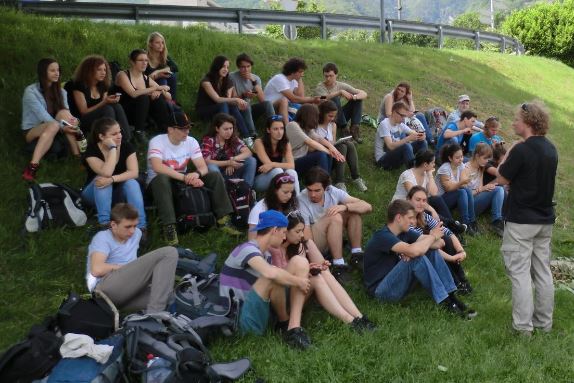Idea
To date, large-scale mapping on site could not easily be conducted on excursions. Reasons are the missing technical equipment, the large expenditure of time and the missing technical knowledge of the students. With the newest developments in the mobile and GIS sector it has become possible to conduct spatially precise recordings with common equipment. In addition, no major organisational and technical effort is required and students do not need specific knowledge.
The idea is to integrate smaller field experiments in excursions which contain a spatial component. The students are supposed to collect data together over a short period of time (e.g. 30 minutes) and record their observations and measurements with an app. The corresponding location is recorded with the GPS-receiver of the mobile device. The results are automatically presented on a map.
With the help of this approach, the following didactic objectives can be implemented on excursions:
- The students deal with spatial objects, phenomena or structures more intensively on excursions by recording their properties and positions with mobile devices (smart phones or tablets).
- The students experience the data collection phase as a collective experiment since the recordings of all participants are visible in real-time.
- The students experience a new form of real-time spatial experiment evaluation. Directly after the recording their self-recorded data is displayed, analysed and interpreted on site. Additionally, specific questions are discussed based on the collected data.
In contrast to already external page established field course experiments, the data collection follows after a short introduction with the private mobile devices of the students. The data is automatically provided in a graphically pre-arranged representation by the system which can then directly be used for the evaluation. The time that is saved through this simple approach is now available for interpretation and discussion in groups and in plenum.
